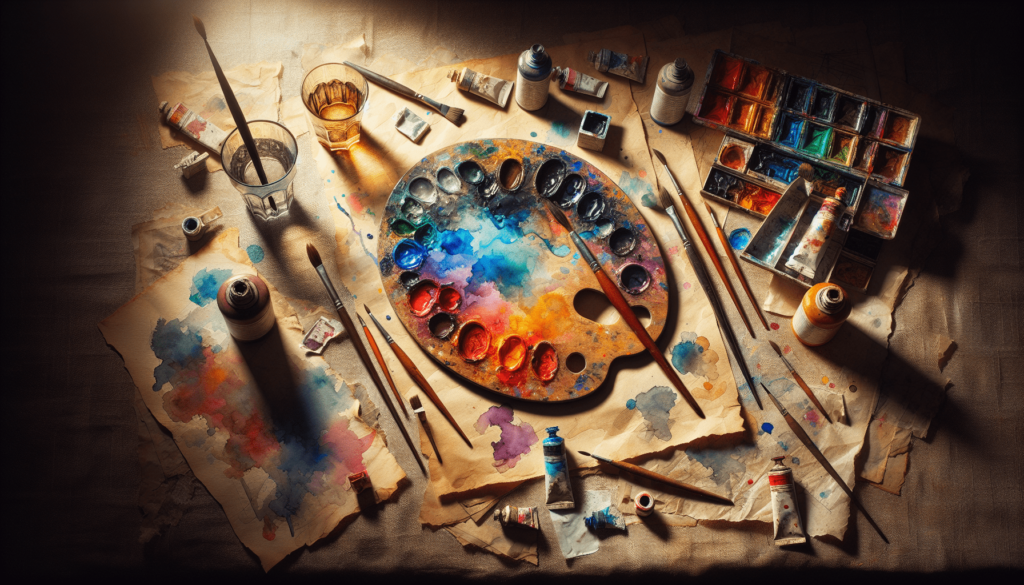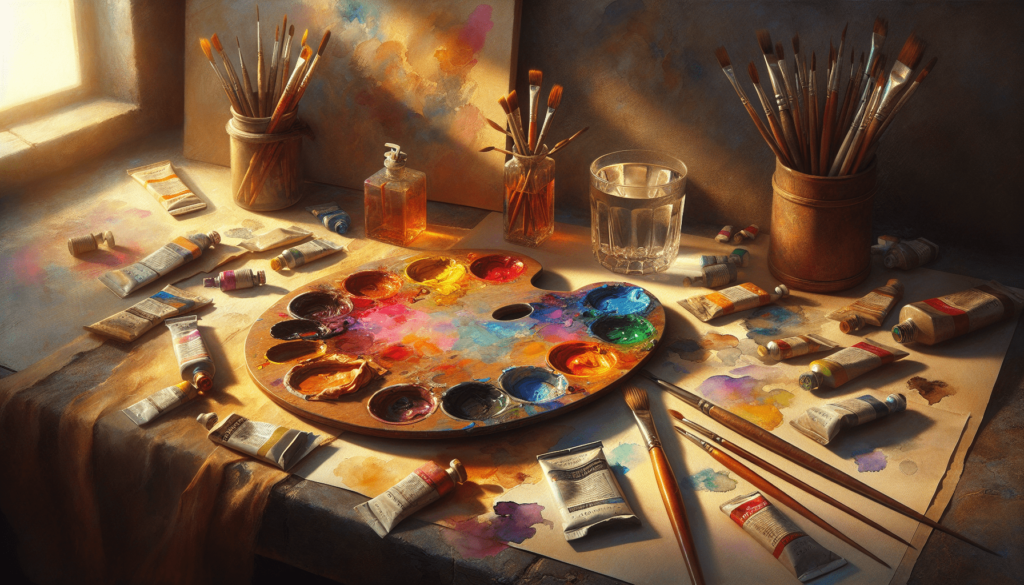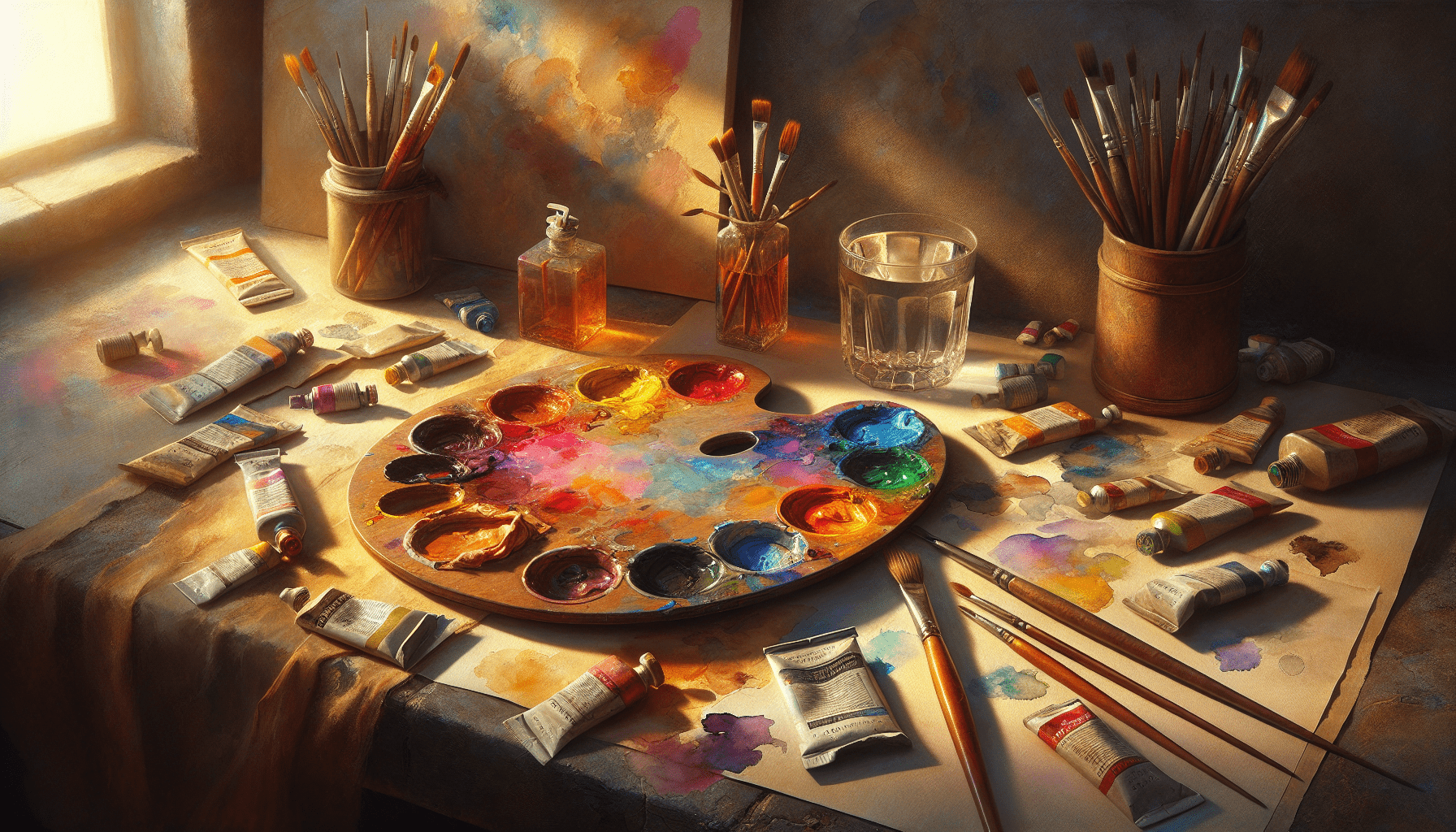In the article “How Are Watercolor Paints Made,” you are introduced to the intricate process behind the creation of watercolor paints. You will explore the careful selection of pigments and binders, understand the nuances of ingredient ratios, and appreciate the craftsmanship involved in producing these vibrant, translucent paints. The article will guide you through each step, from raw materials to the finished product, illuminating the artistry and science that come together to provide you with the tools needed for creative expression. Have you ever wondered how watercolor paints, with their vibrant and transparent hues, come to life? Understanding the intricate processes behind the creation of watercolor paints can enhance your appreciation for this artistic medium and improve your ability to use it effectively.
What Are Watercolor Paints?
Watercolor paints are a unique and versatile medium characterized by their transparency, which allows light to pass through and reflect off the paper, creating a luminous effect. Unlike opaque paints like acrylics and oils, watercolors can be layered to create depth and complexity in your artwork.
The Basic Components
Watercolor paints primarily consist of three fundamental components: pigment, binder, and additives. Each element plays a crucial role in determining the paint’s durability, vibrancy, and application characteristics.
| Component | Description |
|---|---|
| Pigment | Finely ground colored powder derived from natural or synthetic sources. Provides the color effect. |
| Binder | Typically gum arabic, which holds the pigment particles together and adheres them to the paper. |
| Additives | Substances like glycerin, honey, or ox gall that modify the paint’s properties such as flow and drying time. |
Importance of Quality
High-quality watercolor paints are distinguished by their intense, lasting colors, minimal fading (lightfastness), and smooth application. The purity of pigments, the composition of binders, and the quality of additives significantly affect these attributes.
The Process of Making Watercolor Paints
Creating watercolor paints involves several steps that transform raw materials into a usable product. While each manufacturer may have proprietary methods, the general process follows similar stages.
Sourcing and Preparing Pigments
The process begins with selecting and preparing pigments. Pigments can be sourced from minerals, plants, or synthetic compounds, each contributing distinct qualities to the paint.
- Natural Pigments: These are extracted from minerals and plants, like ochre or indigo, through mining or harvesting and are then purified and ground into fine powder.
- Synthetic Pigments: These are developed in laboratories to create consistent, vibrant colors not always available in nature. They undergo chemical synthesis and refinement to produce a powder form.
Grinding and Milling
The pigment powder must be ground to an ultra-fine consistency to ensure uniform dispersion in the binder. This is achieved through milling, a mechanical process that can involve various types of equipment, from traditional stone mills to modern, high-precision industrial mills.
- Traditional Milling: Uses stones or glass machines to carefully grind pigments, emphasizing quality and particle consistency.
- Industrial Milling: Implements high-speed techniques for faster production but must account for the potential heat generation that can affect pigment stability.
Mixing Pigments and Binder
Once the pigments are adequately prepared, they are combined with a binder. Gum arabic is the most common binder used, offering excellent adhesion and flexibility.
- Binder Preparation: Gum arabic is dissolved in water to create a solution, sometimes enhanced with additives like glycerin or honey to adjust the texture and drying properties.
- Mixing Process: The pigment powder is slowly added to the binder solution, often requiring thorough blending to achieve smooth, lump-free consistency.
Refining the Mixture
The mixture undergoes a refining process to improve texture and uniformity. This may include additional grinding or passing the mixture through a fine mesh to eliminate impurities and large particles.
- Homogenization: Ensures the thorough integration of pigment particles with the binder solution, often facilitated by high-shear mixers or mills.
- Addition of Additives: At this stage, additives (such as preservatives, anti-foaming agents, and wetting agents) may be introduced to fine-tune the paint’s behavior.
Preservation and Stability
Watercolor paints must be stable over time, resisting mold growth, spoilage, or separation. This goal is achieved by adding preservatives and testing the mixture under various conditions.
- Preservatives: Prevent microbial growth and extend the shelf life of the paint.
- Stability Testing: Paints are subjected to different temperatures, humidity levels, and light exposure to ensure they retain their qualities over time.
Final Packaging
After the paint mixture has been refined and deemed stable, it’s ready for packaging. The form of packaging can vary, including tubes, pans, or liquid bottles.
- Tubes: Softer and more open to variation in consistency and are commonly used by professional artists.
- Pans: Compact and travel-friendly, solid forms of paint often used for convenience.
- Bottles: Offer liquid watercolor paint options, providing versatility for specific applications.

Factors Influencing Watercolor Paints’ Quality
Several factors influence the final quality of watercolor paints, including pigment type, grinding process, binder quality, and additive effectiveness.
Pigment Quality
The source and preparation of pigments substantially affect the paint’s vibrancy and durability. High-quality pigments provide more intense and consistent colors.
Grinding Fineness
Finer grinding results in smoother paint texture and better pigment dispersion, essential for achieving even coverage and transparency.
Binder Composition
The purity and preparation of gum arabic determine how well the pigment particles adhere to the paper and affect the paint’s flexibility and durability.
Additive Types
Choosing the right additives ensures the paint flows smoothly, dries evenly, and remains stable over time. Improper additives can lead to issues like flaking, cracking, or uneven application.
Innovations in Watercolor Paints Production
As technology advances, new methods and materials constantly emerge, continually shaping the world of watercolor paints.
Synthetic Pigments
The development of synthetic pigments has revolutionized watercolor paints, offering an expansive range of colors and improved lightfastness.
High-Precision Milling
Modern milling equipment ensures ultra-fine grinding of pigments, enhancing the smoothness and consistency of the paint.
Environmental Considerations
Environmental awareness in manufacturing has led to the creation of eco-friendly pigments and sustainable production practices, reducing the ecological impact of paint production.

Conclusion
Understanding how watercolor paints are made provides valuable insights into their unique characteristics and versatility. From the selection of pigments to the meticulous blending and refinement processes, each step is crucial in creating high-quality watercolor paints. As you explore the world of watercolors, consider the complex journey these paints undergo to bring your artistic visions to life.



